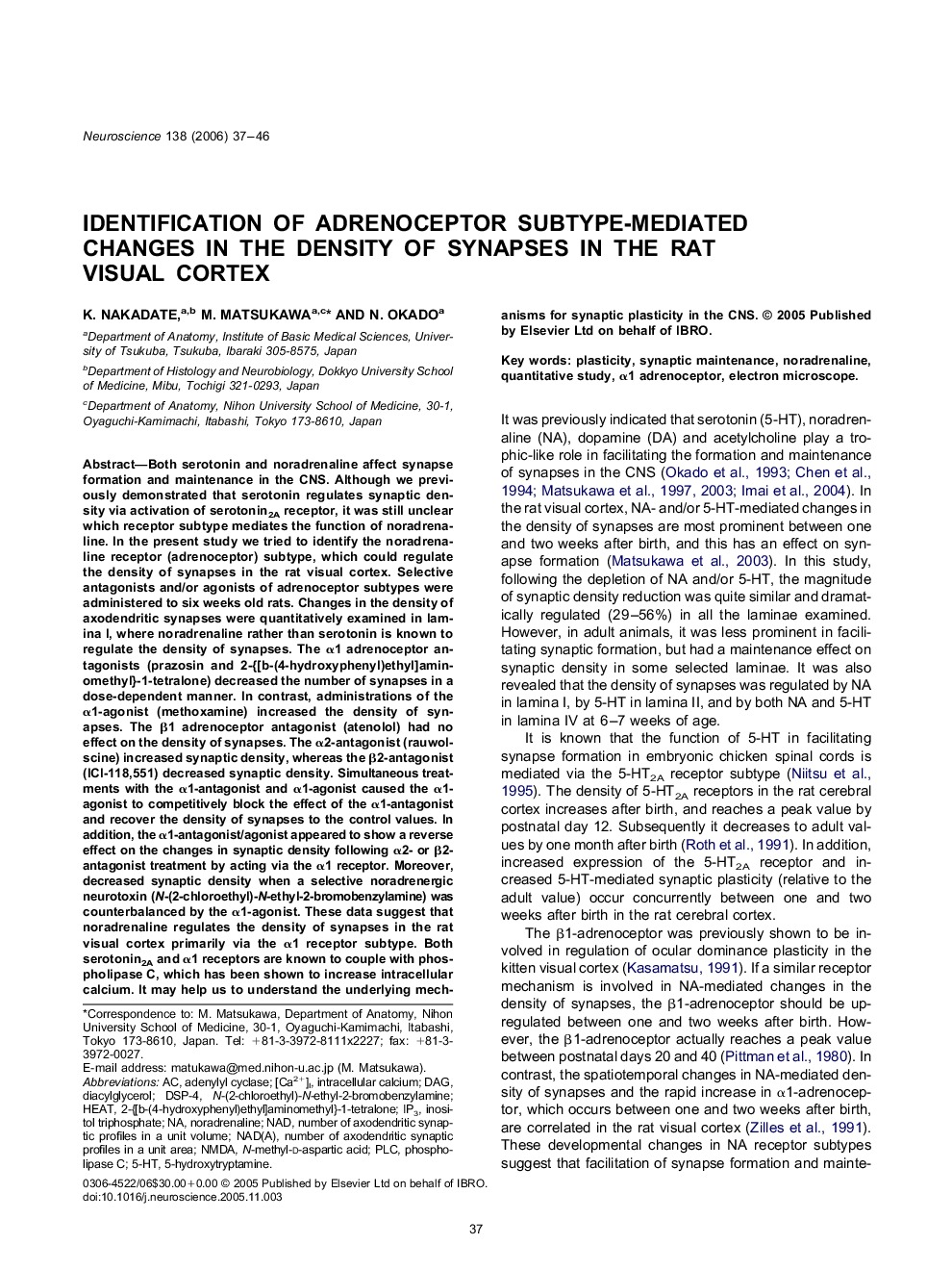| Article ID | Journal | Published Year | Pages | File Type |
|---|---|---|---|---|
| 4342009 | Neuroscience | 2006 | 10 Pages |
Both serotonin and noradrenaline affect synapse formation and maintenance in the CNS. Although we previously demonstrated that serotonin regulates synaptic density via activation of serotonin2A receptor, it was still unclear which receptor subtype mediates the function of noradrenaline. In the present study we tried to identify the noradrenaline receptor (adrenoceptor) subtype, which could regulate the density of synapses in the rat visual cortex. Selective antagonists and/or agonists of adrenoceptor subtypes were administered to six weeks old rats. Changes in the density of axodendritic synapses were quantitatively examined in lamina I, where noradrenaline rather than serotonin is known to regulate the density of synapses. The α1 adrenoceptor antagonists (prazosin and 2-{[b-(4-hydroxyphenyl)ethyl]aminomethyl}-1-tetralone) decreased the number of synapses in a dose-dependent manner. In contrast, administrations of the α1-agonist (methoxamine) increased the density of synapses. The β1 adrenoceptor antagonist (atenolol) had no effect on the density of synapses. The α2-antagonist (rauwolscine) increased synaptic density, whereas the β2-antagonist (ICI-118,551) decreased synaptic density. Simultaneous treatments with the α1-antagonist and α1-agonist caused the α1-agonist to competitively block the effect of the α1-antagonist and recover the density of synapses to the control values. In addition, the α1-antagonist/agonist appeared to show a reverse effect on the changes in synaptic density following α2- or β2-antagonist treatment by acting via the α1 receptor. Moreover, decreased synaptic density when a selective noradrenergic neurotoxin (N-(2-chloroethyl)-N-ethyl-2-bromobenzylamine) was counterbalanced by the α1-agonist. These data suggest that noradrenaline regulates the density of synapses in the rat visual cortex primarily via the α1 receptor subtype. Both serotonin2A and α1 receptors are known to couple with phospholipase C, which has been shown to increase intracellular calcium. It may help us to understand the underlying mechanisms for synaptic plasticity in the CNS.
